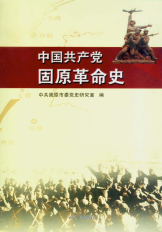
主要责任者: 中国共产党固原市委革命史研究室
责任方式: 编
出版者: 宁夏人民出版社
出版地: 银川
字数: 235 千字
页码: 1-297
开本: 16
中图分类号: D235.433
语种:中
定价:48.00
出版时间:2008-09
丛书多卷书否:否
书目简介:本册工具书共收录34条词条。
被引频次:1
| 词条 | 中国共产党固原革命史 |
| 类别 | 中文百科知识 |
| 释义 |  主要责任者: 中国共产党固原市委革命史研究室 责任方式: 编 出版者: 宁夏人民出版社 出版地: 银川 字数: 235 千字 页码: 1-297 开本: 16 中图分类号: D235.433 语种:中 定价:48.00 出版时间:2008-09 丛书多卷书否:否 书目简介:本册工具书共收录34条词条。 被引频次:1 |
| 随便看 |
开放百科全书收录579518条英语、德语、日语等多语种百科知识,基本涵盖了大多数领域的百科知识,是一部内容自由、开放的电子版国际百科全书。